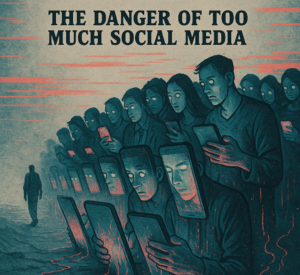
It began with scrolling.
Harmless. Mindless.
A little dopamine.
A few likes.
A few… hundred thousand likes.
Then the algorithms began to learn.
Not what you liked – but why you scrolled.
You weren’t scrolling anymore.
You were being scrolled.
The first documented case of full digital absorption occurred in 2031.
A man named Devin fell into a loop of watching increasingly abstract content:
A rabbit making smoothies.
A man playing chess against his own reflection.
A talking duck giving breakup advice in Morse code.
By video 178,441, he had forgotten how to blink.
Symptoms spread:
People began seeing comment sections in real life.
Some could only communicate through emojis.
Others waited for real-time filters before entering a room.
One woman stopped forming original thoughts.
She waited for trending hashtags to tell her how to feel.
She cried for six hours straight after #ExistentialMuffin became viral.
Governments tried intervention.
A new protocol called “ScrollLock” was issued.
But it backfired.
People just… scrolled the warning away.
Then came the mutation:
An influencer began trending before they even existed.
They were born into virality.
The baby had 92 million followers by 3 days old.
At 2 weeks, it sued its parents for “non-curated content exposure.”
And the final stage?
A group of people stopped interacting with reality altogether.
They stood in perfect poses, all day.
Waiting.
Waiting for the next notification to tell them what to be.
One man – known only as “The Unfollowed” – wandered into the desert without his phone.
He claimed he saw God.
Others claim he saw himself.
But since it wasn’t streamed, no one believed it ever happened.
